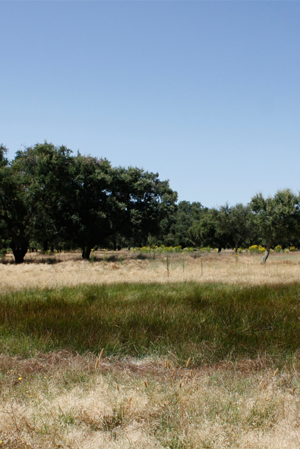
|
 |
The temporary ponds in this region of the Alentejo are one of the habitats with the highest seasonal and inter-annual variation. During the wet season, from autumn to spring, these sites are more or less flooded, reaching a few centimetres in depth, but they dry completely in early summer. In very wet years they reach their maximum dimension, while in very dry years they are not even visible. The colonization of these ponds is mainly by annual plants, adapted to flooding and seasonality, and by species that complete their life cycle during the wet season to disappear in the summer time. Many species have traits of adaptation both to aquatic and dry habitats. Some rare plants are specifically adapted to these ponds and only develop there, germinating in water, flourishing on dry land and dying in a few months. The temporary ponds are habitats of high biodiversity, harbouring during the aquatic phase many species of microorganisms, algae, bryophytes, vascular plants and aquatic insects. They are also breeding sites for amphibians - frogs, toads and newts. Fish are not present in these environments since the distance to other sources of water represents a barrier to colonization and the cyclical drought controls their chance of survival.
|

|